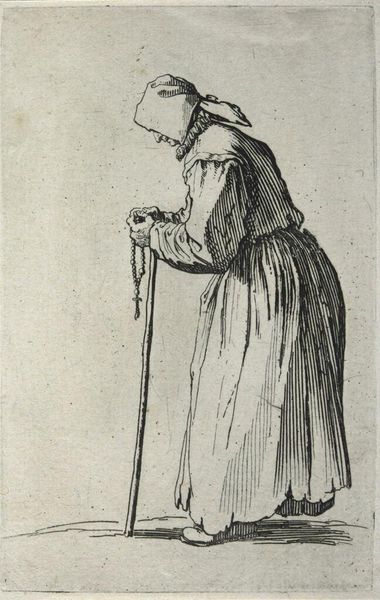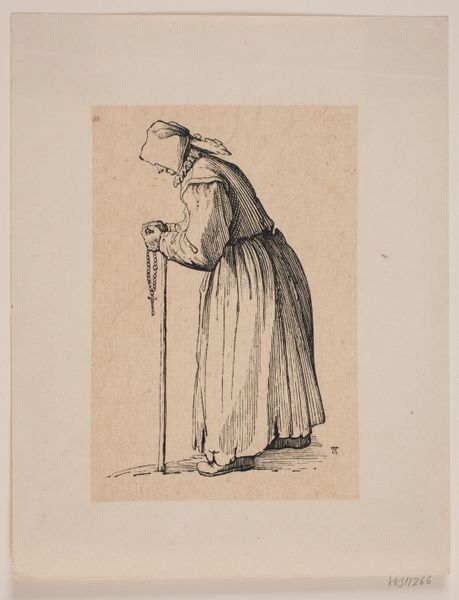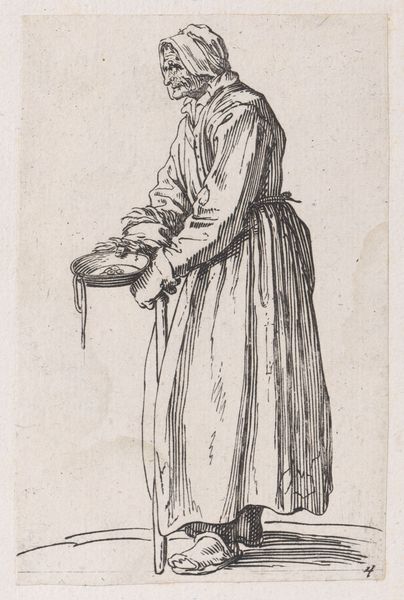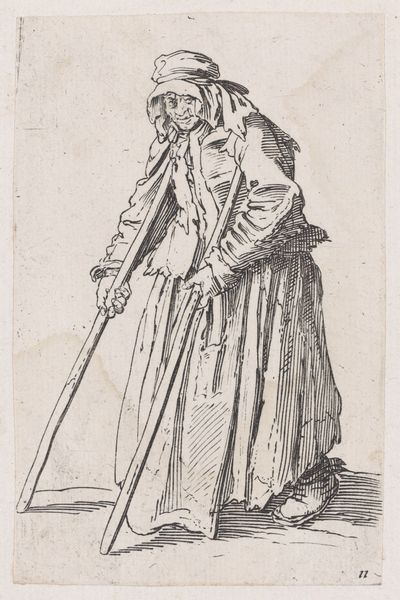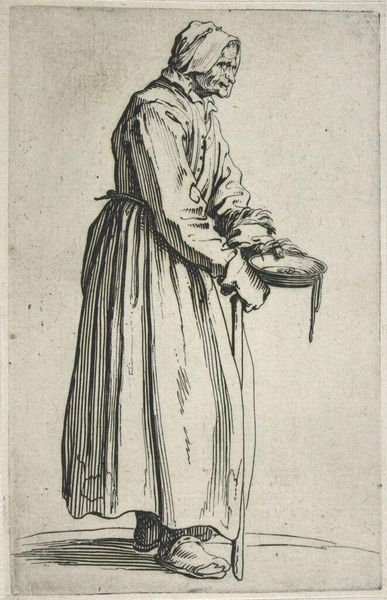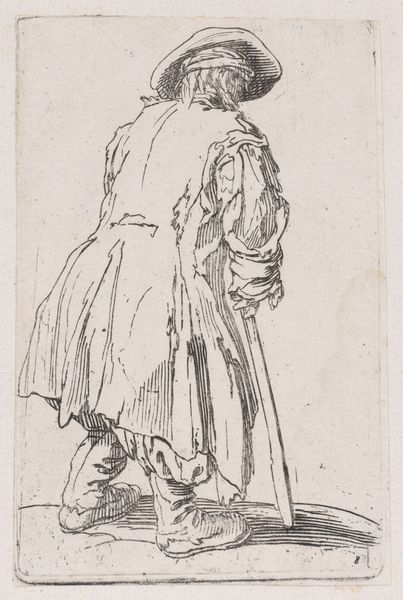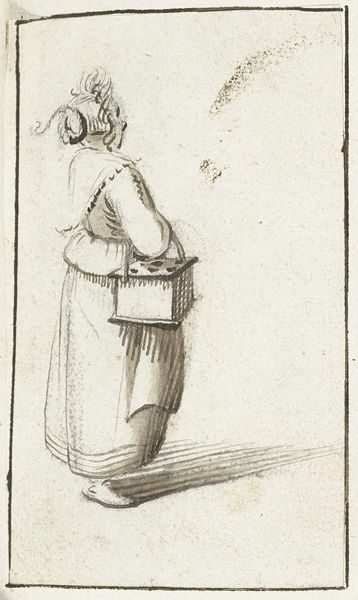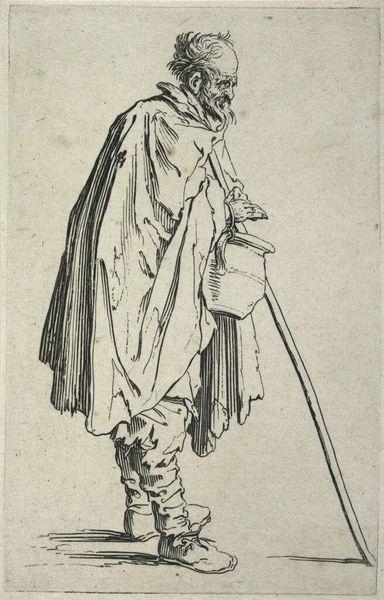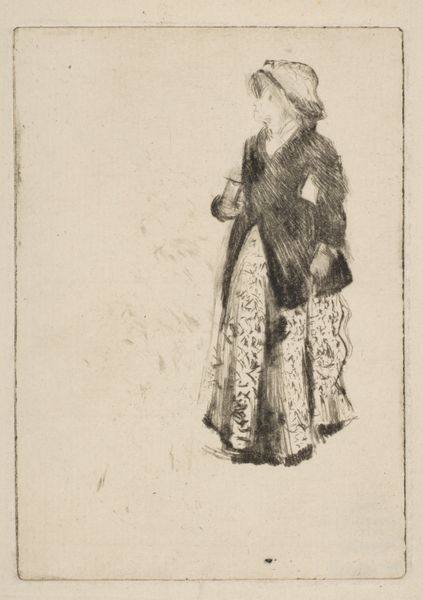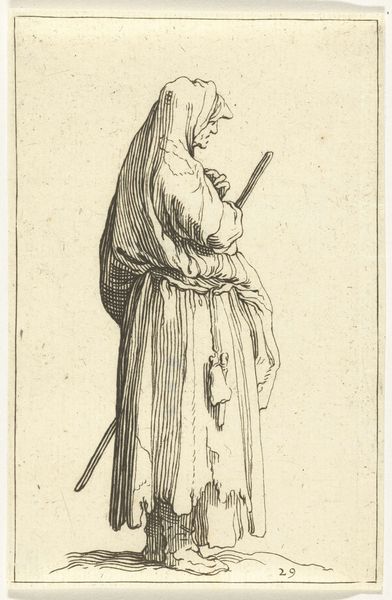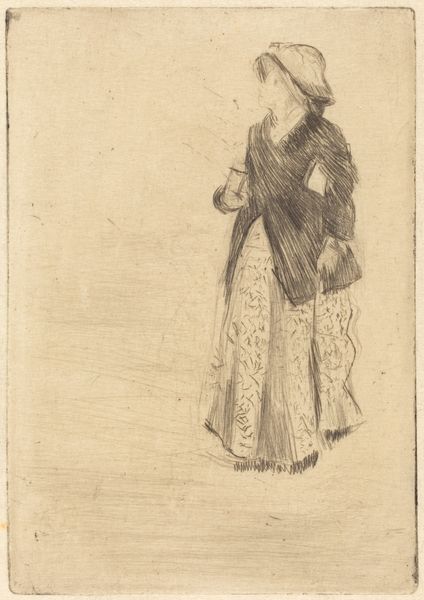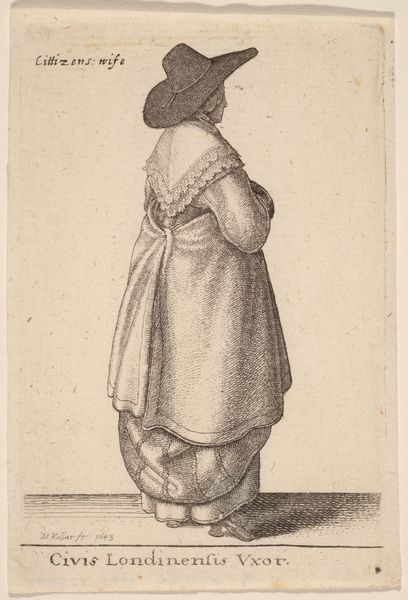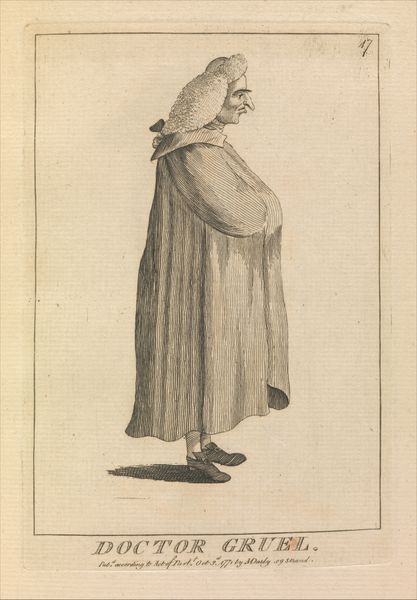
Reverse Copy of La Mendainte au Rosaire (The Female Beggar with a Rosary), from Les Gueux suite appelée aussi Les Mendiants, Les Baroni, ou Les Barons (The Beggars, also called the Barons) 1625 - 1700
0:00
0:00
drawing, print, etching
#
portrait
#
drawing
#
baroque
# print
#
etching
#
figuration
#
genre-painting
Dimensions: Sheet: 5 3/16 x 3 9/16 in. (13.1 x 9 cm) trimmed and backed
Copyright: Public Domain
Editor: This is an etching titled "Reverse Copy of La Mendainte au Rosaire (The Female Beggar with a Rosary)" from "Les Gueux" suite, dating from 1625-1700, created by an anonymous artist. I find the figure to be both forlorn and intensely devout, especially with the detail given to her posture and rosary. What elements stand out to you the most? Curator: I'm particularly drawn to the linearity of the piece. Note how the artist uses densely packed, almost frantic lines to describe the folds of her garments, creating a rich texture in stark contrast to the relative emptiness of the background. Observe also the figure’s posture: the bend in her back mirrored in the curve of the walking stick creates a visual rhyme that is most satisfying. The slight head inclination is a clever touch, emphasizing her piety. How does the artist's strategic placement of line contribute to your understanding of the figure's emotional state? Editor: I think the use of close lines in darker areas like her clothing gives more shape and weight to the figure, which emphasizes the feeling of the burden this woman may carry, physically and spiritually. Is the composition typical of etchings from this period? Curator: Certainly, the baroque period embraced dynamism, which we see echoed in the lines creating a sense of movement despite the subject's stillness. The severe etching lines offer very specific contours of her body; this work is more graphic than painterly, less interested in realism than a visual expression of weight and age through the intensity of mark making. Is that clear? Editor: Yes, the intense linework definitely directs my eye. I was initially focused on the religious aspect, but now I see how the visual components shape the work's message. Curator: Precisely. Through careful attention to form, the artist evokes a powerful response, beyond any singular narrative reading.
Comments
No comments
Be the first to comment and join the conversation on the ultimate creative platform.

